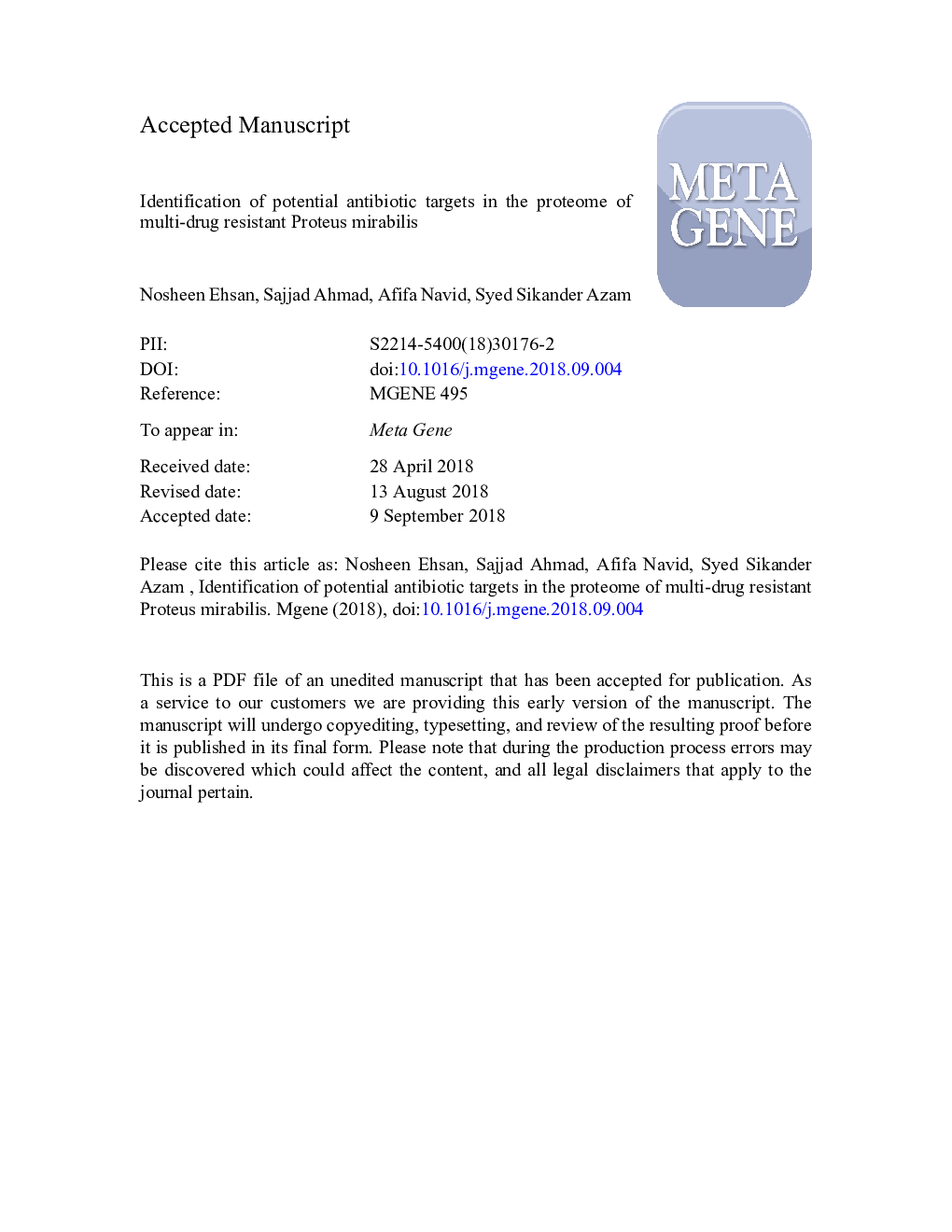| Article ID | Journal | Published Year | Pages | File Type |
|---|---|---|---|---|
| 11007634 | Meta Gene | 2018 | 24 Pages |
Abstract
Proteus mirabilis is pathogen of the urinary tract and is resistant to many of the clinically used antibiotics. Computational identification of novel antibiotic targets could not only save time but also in parallel provide an array of opportunities for developing novel antibiotics to treat infections caused by this pathogen. In the current study, a step-wise subtraction of P. mirabilis proteome was achieved in search of potential antibiotic targets. The main objectives were to identify non-redundant, host non-homologous, pathogen essential, cytoplasmic, virulent and resistant proteins that are part of pathogen-specific metabolic pathways. Further, drugability of the screened candidates was investigated against approved US Food and Drug Administration (FDA) drugs using BLASTp tool of DrugBank database. It was revealed that 3553 proteins represent the core proteome of the pathogen. BLASTp against human proteome illustrated 3040 proteins as non-homologous, while essentiality check resulted into 1017 pathogen essential proteins. Sub-cellular localization identified 514 as cytoplasmic in which 66 proteins were selected as virulent. Metabolic pathway analysis mapped 28 proteins to pathogen unique pathways and characterized four targets as druggable. Further filtration unraveled “glnG” protein as resistant and the most appropriate target for future drug discovery. These findings may provide foundation to develop novel antibiotics for P. mirabilis based infections.
Related Topics
Life Sciences
Biochemistry, Genetics and Molecular Biology
Biochemistry, Genetics and Molecular Biology (General)
Authors
Nosheen Ehsan, Sajjad Ahmad, Afifa Navid, Syed Sikander Azam,
